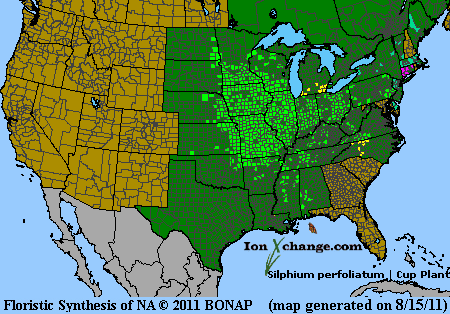 Loading... Please wait...
Loading... Please wait...- Home
- SEEDS
- SEED MIXES
- BUY PLANTS
- Info Request
-
Educational Videos
- Greenhouse Transplanting Demonstration
- Native Seed Cleaning demonstration at Ion Exchange Native Seed and Plant Nursery
- Attracting Butterflies
- Bidens - Bidens cernua Harvest Video
- Big Blue Stem Harvest
- Butterfly Milkweed Video
- Button Blazingstar - Liatris aspera Video
- Buttonbush - Cephalanthus occidentalis Video
- Canada Anemone - Anemone canadensis Harvest Video
- Cardinal Flower - Lobelia cardinalis Video
- Control Burn - Wildflower Field
- Cream Gentian - Gentiana flavida
- Culver's Root - Veronicastrum virginicum Video
- Cup Plant - Silphium perfoliatum Video
- Dormant Seeding | Planting
- Earthyman's Favorite Wildflowers Video
- Eco-Friendly Golf Course Seed Mix
- Floating Islands
- Fringed Loosestrife - Lysimachia ciliata Video
- Giant Yellow Hyssop - Agastache nepetoides Video
- Indiangrass - Sorghastrum nutans Video
- Iowa Prairie Partner Program
- Leadplant - Amorpha canescens (Potted) Video
- Meadow Blazingstar - Liatris ligulistylis
- Midland Shooting Stars - Dodecatheon meadii Video
- Native Plant Nursery Field Irrigation Experiment
- Nodding Onion - Allium cernuum Video
- Ohio spiderwort - Tradescantia ohiensis Video
- Old Man's Beard - Clematis virginiana blooms Video
- Oxeye Sunflower - Heliopsis helianthoides Video
- Prairie Spiderwort - Tradescantia bracteata
- Purple Coneflower - Echinacea purpurea Video
- Rain Garden or Water Garden Video
- Rattlesnake Master - Eryngium yuccifolium Video
- Riverbank Stabilization - Wetland Plants
- Rose Mallow - Hibiscus militaris Video
- Rosinweed - Silphium integrifolium Video
- Royal Catchfly - Silene regia
- Showy Tick Trefoil - Desmodium canadense Video
- Sneezeweed - Helenium autumnale Video
- Swamp Betony - Pedicularis lanceolata Video
- Swamp Milkweed - Asclepias incarnata Video
- Sweet Blackeyed Susan - Rudbeckia subtomentosa Video
- Tall Coreopsis - Coreopsis tripteris Video
- Urban Butterfly Garden
- Wild Bergamot - Monarda fistulosa Video
- Wild Geranium - Geranium maculatum Harvest
- Wild Goldenglow - Rudbeckia lanciniata Video
- Wild Petunia - Ruellia humilis Harvest Video
- Woodland Knotweed - Polygonum virginianum Video
- Yellow Coneflower - Ratibida pinnata Video
- Blog
- Resources
- Policies
Contact Us
Phone:
563-419-0837
or 563-535-7231
Email:
hbright@ionXchange.com
Browse Products
Add to Wish List
You Recently Viewed...
Our Newsletter
Product Description
"
Compass Plant, Rosinweed (also refers to S. integrifolium), Turpentine Plant, Polar Plant"
Silphium is an ancient Greek term for "resinous juices". Perfoliatum is from the Latin for "with the leaf surrounding the stem so the stem appears to pass through the leaf".
| Sun Exposure | Prairie, Savanna |
| Soil Moisture | Wet Mesic, Mesic |
| Bloom Time |
Summer, Fall July, August, September |
| Bloom Color | Yellow |
| Max Height | 8 feet |
| Wetland Code | FACW- |
| Germ Code | C(60) |
| Seeds Per Ounce | 1,400 |
Found throughout the tallgrass Prairie region and south on mesic prairies. Bright yellow flowers bloom from July through August. Very tall plant, sometimes reaching 8 or more feet. The taproot is also very long, reaching as much as 4 to 5 feet into the ground. The distinctive joined leaves form a cup that can actually hold water after a rain. Many times we have seen finches and sparrows bathing in the cup on a hot summer day.
Edible Uses: Unknown
Medicinal Uses: Cup plant was employed medicinally by several native North American Indian tribes who used it to treat a variety of complaints. It is little, if at all, used in modern herbalism. A decoction of the root has been used to treat the stoppage of periods, and also to treat morning sickness and to prevent the premature birth of a child. In view of these conflicting uses, it is best that it is not used by pregnant women unless under the guidance of a qualified practitioner. The root is alterative, antispasmodic, diaphoretic, emmenagogue, febrifuge, hepatic, stimulant, styptic and tonic. It is used in the treatment of liver and spleen disorders and has also been used to treat morning sickness. A decoction of the root has been used internally in the treatment of back and chest pain and lung haemorrhages. A decoction of the root has been used as a face wash to treat paralysis. A poultice of the moistened dried root has been applied to wounds to stop the bleeding.
Herbal Uses: Unknown
Product Videos
-
 Cup Plant - Si...Earthyman films Cup Plant (Silphium perfoliatum) growing at Io...
Cup Plant - Si...Earthyman films Cup Plant (Silphium perfoliatum) growing at Io...














